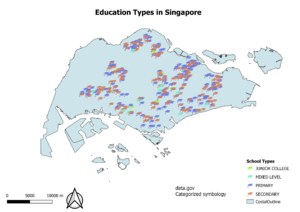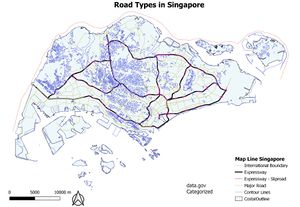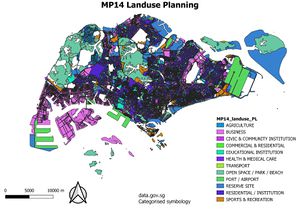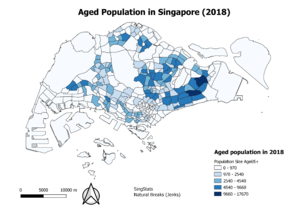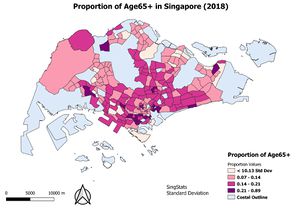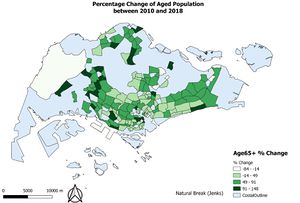SMT201 AY2018-19T1 EX1 Khong Lee Han
Contents
Part 1
School Types
For the distribution of public education institution by school types, I used categorized as the education types has been split into 4 different groups of primary,secondary, mixed level and junior college, hence would be more suitable to used “categorized” type as symbology. As for the visual variable, I used a standard size throughout, with a “graduating cap” SVG symbol as there is no varying size between schools, so there is no need for varying sizes of SVG symbols, only type of school, and so I used different colours to represent different type of schools.
Road Type As for the road type, I classified them into Expressway, Expressway Slip road , Major Road and Contour Lines and classified using “Categorized” symbology. The different road types are represented by different colours and the expressways are thicker in lines.
Master Plan 2014 Landuse Planning
As stated by URA, The Master Plan 2014 is driven by the vision of an inclusive, liveable, economically vibrant, and green home for Singaporeans. Hence, I deleted unnecessary fields like cemeteries and places of worship and consolidates areas into 12 categories. I used ‘categorized’ symbology to represent different landuse type using different colours
Part 2
In separate text describe the spatial patterns, if any, reveals by each of the choropleth maps prepared.
| Map Type | Description |
|---|---|
| 2010 Aged population Age65+ |
|
| 2018 Aged population Age65+ |
|
| 2010 Aged Population Proportion |
|
| 2018 Aged Population Proportion |
|
| % Change in Aged Population between 2010 and 2018 |
|
Reasoning behind classification choices, how you derived the new variables and handles missing values, and any other relevant judgements and assumptions.
Aged population (+65) in 2010 & 2018:
- Reason for use of choice of Natural Breaks (Jenks), for both Aged Population (+65) in 2010 and 2018 is because it produces the most natural grouping type for both years of 2010 and 2018. Natural breaks will minimize the variance within the classes and maximize between-class differences.
- Locations with missing values, I considered the values as ‘0’ as we have no clue of what the possible values of those Age65+ may be.
- I used graduated colours to represent the choropleth map as the aged population is a range of numerical values that cannot be classified into distinct groups.
Proportion of Aged Population in 2010 and 2018:
- To get the proportion values, I created a new field called “Total” which is the total sum of all ages in each subzone.
- Proportion of those Age65+ = (Age 65+)/(Total population)
- I used standard deviation as a classification choice as when plotting the graphs, I realised the graph was a normal distribution curve and hence, using a standard deviation classification method would be better. Furthermore, with an outlier for the 2018 Age65+ proportion, it would not be right to use equal interval.
- I classified the data into classes of 4 classes as stated below such that I can see the specific groupings of those above and below the standard deviation range as this will give me a better idea when looking at the proportion graphs of the groupings of those within the
# 1) Between 0 to x-σ : includes subzones with either very little proportion of elderly or high proportion of youths # 2) between x-σ to x : below average population of elderly # 3) between x to x+ σ : above average proportion of elderly # 4) above x+ σ : includes subzones with high proportion of elderly, signalling it is an ageing population in that subzone area
Percentage % Change between 2010 and 2018 in Age65+ Population:
- I deleted the values with percentage changes of 150% and above, as well as 0% changes in values as the difference in absolute values for the population in elderly or general population size was drastically different.
- Hence, it’s either that the joining of tables did not work well for certain areas and caused loss of results, or that insufficient data was collected and result in anomaly values and hence, I changed the % change of those locations to NULL.
- As for the classification choice, I used natural jenks as there are no longer anymore outliers and would be more useful to categorize the data.
